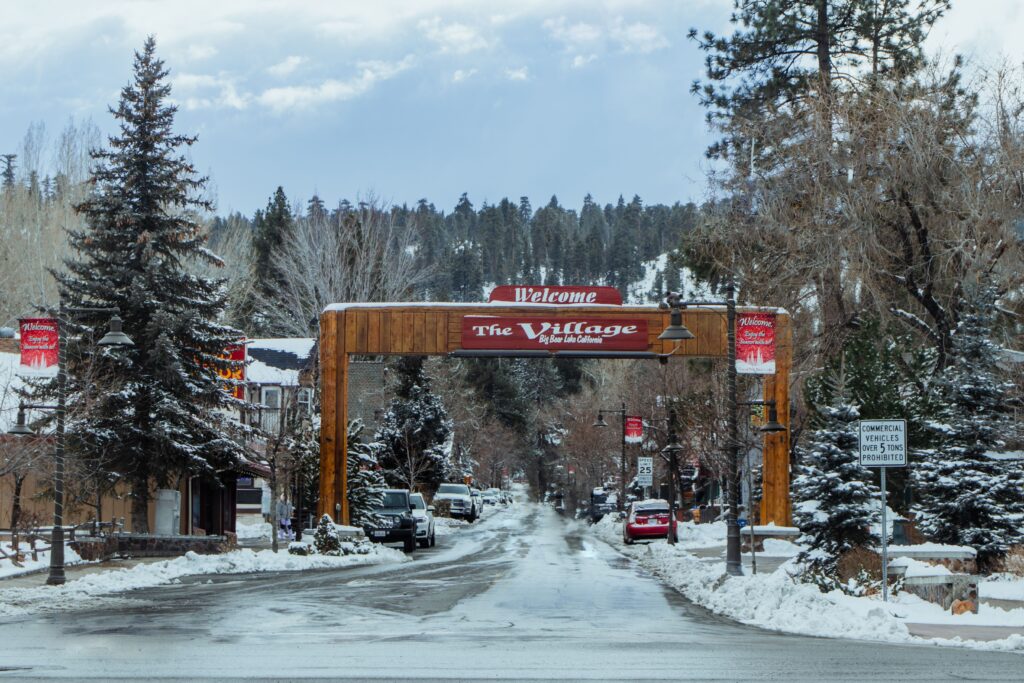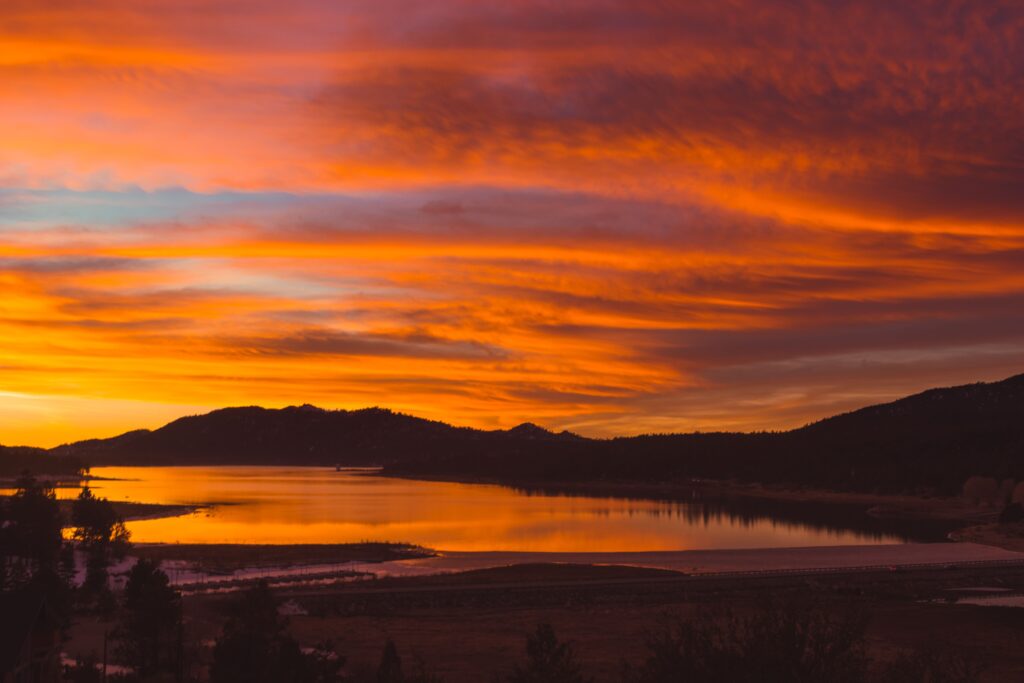
Capturing stunning mountain photos requires a combination of technical skills, creative vision, and an understanding of the unique challenges and opportunities that mountain landscapes offer. Here are some tips to help you take breathtaking mountain photos in Big Bear Lake:
- Scout Locations in Advance: Research and explore the area in advance to find the best vantage points, hiking trails, and viewpoints for your mountain photos. Consider the time of day and the season, as different lighting and weather conditions can drastically affect your shots.
- Golden Hour Magic: The “golden hour,” which occurs during sunrise and sunset, provides soft, warm, and flattering light. Plan to shoot during these times for the best results. The dramatic lighting during these hours can enhance the texture and depth of mountain landscapes.
- Use a Tripod: Stable, sharp photos are essential for capturing the intricate details of mountain landscapes. A tripod helps eliminate camera shake and allows for long exposure shots, especially during low-light conditions.
- Experiment with Composition: Create visually engaging compositions by following the rule of thirds, leading lines, and foreground interest. Incorporate elements like trees, rocks, or lakes in the foreground to add depth to your photos.
- Capture Seasonal Changes: Mountains can look vastly different depending on the season. Photograph them in various seasons to showcase their unique beauty, from snow-capped peaks in winter to lush meadows in spring.
- Watch the Weather: Weather conditions can add drama and mood to your mountain photos. Moody clouds, mist, or fog can create a sense of mystery, while clear blue skies can highlight the vibrant colors of the landscape.
- Consider Your Lens Choice: Wide-angle lenses are popular for mountain photography, as they allow you to capture vast vistas. However, a telephoto lens can be useful for isolating specific details or distant peaks.
- Use Filters: Consider using filters like polarizers to reduce glare and enhance color saturation. Graduated neutral density (ND) filters can help balance the exposure between the bright sky and the darker landscape.
- Adjust Exposure Settings: Use manual mode or aperture priority to control exposure. Experiment with different settings to achieve the desired depth of field. Ensure that the entire scene, from the foreground to the background, is in focus.
- Include a Subject: While the mountains themselves are awe-inspiring, including a person, wildlife, or an object can provide scale and context, making your photos more relatable and engaging.
- Safety First: When photographing in mountainous terrain, prioritize safety. Be prepared for changing weather conditions, carry essential gear, and let someone know your plans.
- Post-Processing: Edit your photos in post-processing software like Adobe Lightroom or Photoshop to enhance colors, contrast, and sharpness. However, aim for a natural look, avoiding over-processing.
- Practice Patience for photos in Big Bear Lake: Mountain photography often requires waiting for the right moment when the light and conditions align perfectly. Be patient and prepared to return to the same location multiple times if necessary.

Remember that mountain photography is as much about the experience as it is about the final images. Enjoy the breathtaking scenery and take your time to capture the beauty of these majestic landscapes.
Be the first to comment